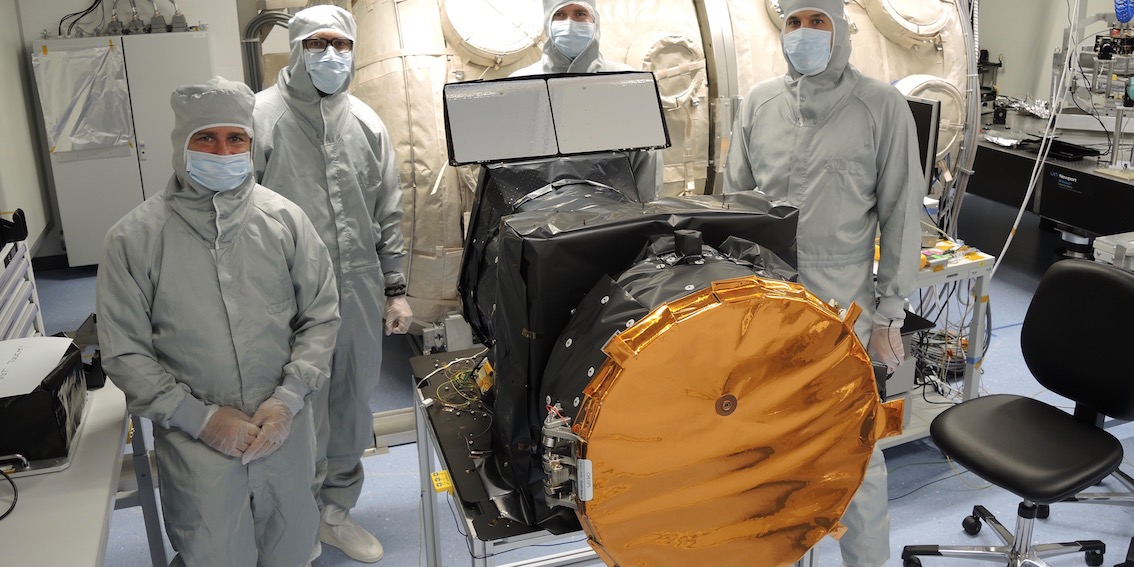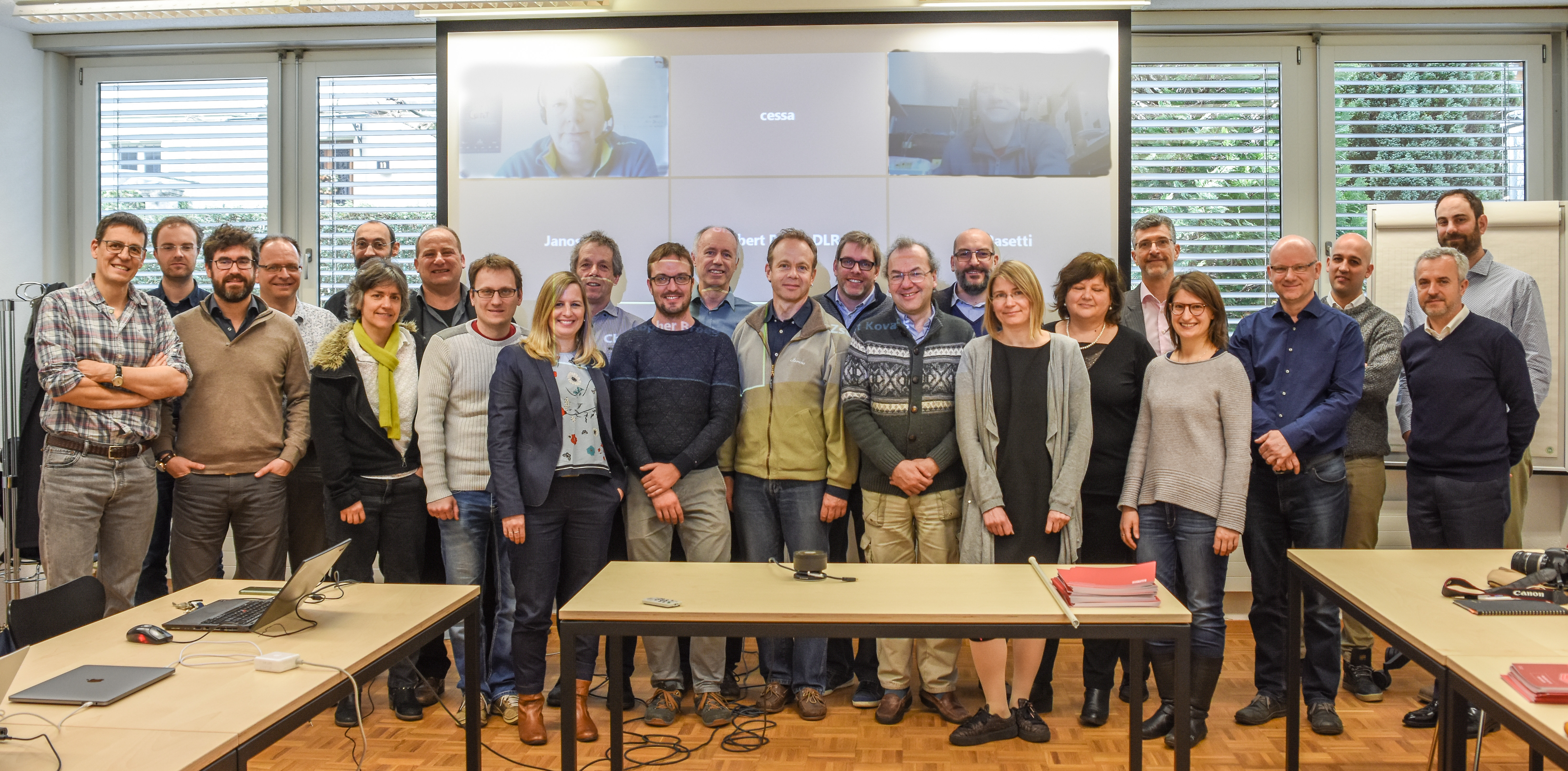CHEOPS leaves the University of Bern

Construction of the space telescope CHEOPS is finished. The engineers from the Center for Space and Habitability (CSH) at the University of Bern will package the instrument this week and send it to Madrid, where it will be integrated on the satellite platform. CHEOPS (CHaracterising ExOPlanet Satellite) is to be ready to launch in early 2019 and will observe how exoplanets in other solar systems pass in front of their host star.
The specially designed transport case is ready and waiting in the building for Exact Sciences of the University of Bern. In the next few days, the CHEOPS team will load the space telescope in the cleanroom into the transport container, where it is well protected against shock, moisture and dirt. A truck will then transport the precious cargo to Madrid. The company “Airbus Defense and Space – Spain” built the satellite platform that supports the telescope and enables it to operate in space. In the upcoming weeks the instrument will be integrated and the satellite will be tested.
“We think that we meet the requirements, otherwise we would not be flying,” says Christopher Broeg, project manager for the CHEOPS mission. The space telescope will observe stars in our cosmic neighbourhood that are known to be orbited by exoplanets. CHEOPS measures the brightness of the stars. This decreases slightly when an exoplanet passes in front of its host star. The size of the exoplanet can be determined by the decrease in brightness during such a transit. “The instrument must be able to measure with extreme precision. This was the major design challenge,” says Willy Benz, professor of Astrophysics at the University of Berne and Principal Investigator of the CHEOPS mission, which Switzerland is carrying out together with the European Space Agency (ESA).
Components from different countries
Institutes from eleven European nations are involved in the CHEOPS mission. The structure was designed and manufactured in Switzerland, the optics originate from Italy, the baffle and cover assembly from Belgium, the data processing unit and flight software from Austria, the radiators from Hungary and the focal plane module, which was developed in Germany, contains a CCD detector from Great Britain. At the University of Bern, the various parts were assembled in the cleanroom and the telescope was subjected to vibrations on the shaker, similar to those vibrations it will have to withstand at the start. “We were relieved when the mirror and its adhesive bonding passed the vibration test,” remembers Christopher Broeg, thinking back on the particularly delicate test phase.
The team was put under tremendous time pressure. CHEOPS is ESA’s first small ‘S-class mission’. It must be implemented within a few years and cannot cost ESA more than 50 million euro. Switzerland pays around 30 million euro, while the remaining partners pay about 20 million euro. “We are proud that we were able to stick to the budget in the end, which cannot always be taken for granted in such projects,” says Willy Benz. In order not to delay the project too much, the engineers had to carry out different jobs in parallel instead of following the normal sequence. This meant that the load-bearing structure had to be determined even before one knew exactly how the mirror was to be mounted. This was particularly tricky because the position of the main and secondary mirrors must remain stable, even if the temperature changes in orbit. The tests finally showed that the construction works. “We are even more stable than we first thought,” says Christopher Broeg happily.
In the last few weeks, the engineers calibrated the instrument and tested the software. Following its integration in Madrid, the satellite will be tested at several locations in Europe before being sent to Kourou, ESA’s space station in French Guiana. By early 2019, CHEOPS should be ready to launch. A Soyuz rocket will launch it together with a larger Italian radar satellite into a 700-kilometer orbit. “I’m looking forward to seeing CHEOPS in space and getting the first data,” says Christopher Broeg: “I’m really excited about it.”

Members of the CHEOPS consortium met in Bern before the instrument delivery. (Photo Sylviane Blum)
Categories: External Newsletter, News

